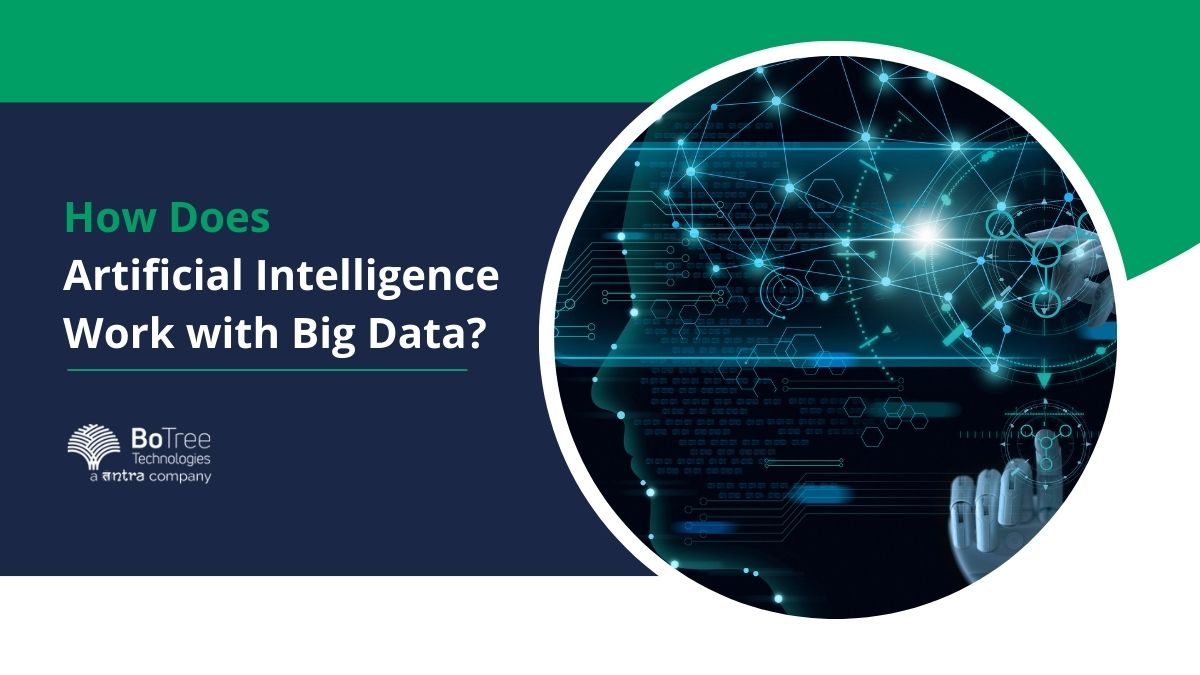Improving data security with AI in big data environments is paramount in today’s interconnected world. The sheer volume and velocity of data necessitate advanced security measures, and artificial intelligence offers a powerful arsenal of tools to combat evolving threats. This exploration delves into how AI enhances threat detection, data encryption, access control, data loss prevention, and overall data governance, ultimately strengthening the security posture of big data systems.
We’ll examine real-world applications and best practices to illustrate the transformative potential of AI in safeguarding sensitive information within these complex environments.
AI-Driven Threat Detection in Big Data: Improving Data Security With AI In Big Data Environments

Big data environments, while offering immense analytical potential, present a significantly expanded attack surface for malicious actors. The sheer volume, velocity, and variety of data increase the complexity of security management, making traditional security measures often insufficient. AI offers a powerful solution by automating threat detection and response, providing a level of sophistication beyond human capabilities alone.
Common Threats to Data Security in Big Data Environments
Big data systems face a unique set of security challenges. These threats range from insider threats and data breaches to denial-of-service attacks and sophisticated malware designed to exploit vulnerabilities within distributed systems. Common threats include unauthorized access to sensitive data, data exfiltration, data modification or deletion, and disruptions to service availability. The distributed nature of big data architectures, often spanning multiple cloud providers and on-premise infrastructure, complicates security management and increases the risk of vulnerabilities.
The scale of data also makes manual monitoring and threat detection extremely challenging and time-consuming.
AI Algorithms for Anomaly Detection in Security Breaches
AI algorithms, particularly machine learning (ML) models, excel at identifying subtle anomalies that indicate security breaches. These algorithms can be trained on vast datasets of normal system behavior, allowing them to establish a baseline and flag deviations that might signal malicious activity. Techniques such as unsupervised learning, using algorithms like clustering and anomaly detection, are particularly effective at identifying unknown threats.
Supervised learning methods can also be used, where known attack patterns are used to train a model to identify similar future attacks. These algorithms analyze network traffic, system logs, and user activity to detect patterns indicative of intrusions, data breaches, or other malicious activities. Real-time anomaly detection is crucial, allowing for swift responses to minimize damage.
Examples of AI-Powered Security Tools for Threat Detection
Several AI-powered security tools are available for big data threat detection. These tools leverage various machine learning techniques to analyze large datasets and identify anomalies. For example, Splunk’s User and Entity Behavior Analytics (UEBA) solution uses machine learning to detect insider threats and malicious activities by analyzing user and entity behavior patterns. Similarly, IBM QRadar Advisor with Watson uses AI to correlate security events, prioritize alerts, and provide insights into potential threats.
These tools often integrate with existing security information and event management (SIEM) systems, enhancing their capabilities significantly. Other examples include tools from Darktrace, CrowdStrike, and SentinelOne, each offering unique AI-driven approaches to threat detection.
Comparison of AI Techniques for Anomaly Detection in Big Data
Various AI techniques are used for anomaly detection, each with its strengths and weaknesses. Supervised learning requires labeled datasets of known attacks, which can be time-consuming and expensive to create. However, it provides high accuracy in identifying known threats. Unsupervised learning, on the other hand, can detect unknown threats but might produce more false positives. Deep learning methods, such as recurrent neural networks (RNNs) and long short-term memory (LSTM) networks, are particularly effective in analyzing time-series data, such as network traffic logs, to identify complex patterns indicative of attacks.
The choice of technique depends on the specific requirements of the big data environment and the available data.
Hypothetical System Architecture for AI-Driven Threat Detection
A robust AI-driven threat detection system for big data requires a well-defined architecture. The following table Artikels a hypothetical system design:
| Component | Description | Interaction | Technology |
|---|---|---|---|
| Data Ingestion | Collects data from various sources (logs, network traffic, etc.) | Provides data to the Data Processing layer | Apache Kafka, Flume |
| Data Processing | Preprocesses and transforms data for analysis | Provides cleaned data to the AI Model layer; receives feedback from the Response layer | Apache Spark, Hadoop |
| AI Model | Applies machine learning algorithms for anomaly detection | Receives data from Data Processing; sends alerts to the Response layer | TensorFlow, PyTorch, Scikit-learn |
| Response Layer | Triggers alerts, initiates remediation actions, and provides feedback to the Data Processing layer | Receives alerts from the AI Model; interacts with security tools and systems | Security Orchestration, Automation, and Response (SOAR) tools |
Data Encryption and Access Control with AI

The exponential growth of big data necessitates robust security measures to protect sensitive information. Traditional security methods often struggle to keep pace with the volume, velocity, and variety of big data, creating vulnerabilities. Artificial intelligence (AI) offers a powerful solution, automating and enhancing data encryption and access control processes to mitigate these risks and ensure data integrity and confidentiality.
This section explores the pivotal role of AI in securing big data environments through advanced encryption and access management.
AI significantly transforms data encryption and access control in big data by automating complex tasks, adapting to evolving threats, and providing granular control over data access. Its ability to analyze vast datasets allows for the identification of patterns and anomalies, leading to more effective and proactive security measures. Furthermore, AI’s adaptive nature allows for continuous improvement of security protocols based on real-time threat intelligence.
AI Automation of Data Encryption Processes in Big Data
AI algorithms can automate the encryption of data at rest and in transit, significantly reducing the manual effort required and minimizing human error. Machine learning models can dynamically adjust encryption keys based on risk profiles, ensuring optimal security. For instance, AI can automatically encrypt sensitive data identified through data classification techniques, applying different encryption levels based on the sensitivity of the information.
This automated approach ensures consistent and timely encryption, enhancing overall data security.
AI Enhancement of Access Control Mechanisms
AI enhances access control by implementing sophisticated user authentication and authorization systems. Machine learning algorithms can analyze user behavior patterns to detect anomalies indicative of unauthorized access attempts. Furthermore, AI can dynamically adjust access permissions based on context, such as location, device, and time of day, significantly reducing the risk of data breaches. AI-powered systems can also analyze data access requests and grant or deny access based on predefined policies and risk assessments.
This granular control over data access minimizes the attack surface and strengthens the overall security posture.
Examples of AI-Based Access Control Systems in Big Data Environments
Several vendors offer AI-driven access control systems for big data. These systems often integrate machine learning algorithms to analyze user behavior and identify suspicious activities. For example, a system might flag an unusual login attempt from an unfamiliar location or detect unauthorized access to sensitive data. Some systems utilize federated learning techniques to share threat intelligence across multiple organizations without compromising individual data privacy.
Another example involves AI-powered systems that automatically adjust access permissions based on changes in user roles or responsibilities.
Benefits and Challenges of Using AI for Data Encryption and Access Control in Big Data
The benefits of using AI for data encryption and access control include improved automation, enhanced security, reduced human error, and better adaptability to evolving threats. However, challenges exist, including the need for significant computational resources, the potential for bias in AI algorithms, and the complexity of integrating AI systems into existing big data infrastructures. Ensuring the security and integrity of AI models themselves is also critical.
Furthermore, the explainability of AI-driven decisions is essential for building trust and ensuring compliance with regulations.
Step-by-Step Procedure for Implementing AI-Driven Encryption and Access Control in a Big Data System
Implementing AI-driven encryption and access control requires a structured approach. The following steps Artikel a potential implementation plan:
A phased approach is recommended to minimize disruption and ensure a smooth transition. Thorough testing and validation are crucial at each stage.
- Data Discovery and Classification: Identify and classify sensitive data within the big data environment. This involves analyzing data attributes, sensitivity levels, and regulatory requirements.
- AI Model Selection and Training: Choose appropriate AI algorithms for encryption and access control. Train these models on historical data to detect anomalies and predict potential threats.
- Integration with Existing Systems: Integrate the AI models with existing big data infrastructure, including data storage, processing, and access control systems.
- Policy Definition and Enforcement: Define clear policies for data encryption and access control, and ensure these policies are enforced by the AI system.
- Monitoring and Evaluation: Continuously monitor the system’s performance, evaluate its effectiveness, and refine the AI models based on real-time threat intelligence.
- Regular Audits and Compliance: Conduct regular security audits to ensure compliance with relevant regulations and industry best practices.
AI for Data Loss Prevention (DLP) in Big Data
Data loss in big data environments presents significant risks, impacting business operations, regulatory compliance, and brand reputation. The sheer volume, velocity, and variety of data make traditional DLP methods inadequate. AI offers a powerful solution, enabling proactive monitoring, intelligent detection, and automated responses to prevent data breaches and leaks.
Common Causes of Data Loss in Big Data Environments
Several factors contribute to data loss in big data systems. These include human error, such as accidental deletion or unauthorized access; malicious attacks, like ransomware or insider threats; system failures, including hardware malfunctions or software bugs; and inadequate data security practices, such as insufficient access controls or lack of data encryption. The distributed nature of big data further complicates the challenge, making it difficult to track data movement and identify potential vulnerabilities.
Data breaches resulting from these causes can lead to significant financial losses, reputational damage, and legal repercussions.
AI-Powered Proactive Monitoring and Detection for Data Loss Prevention
AI algorithms excel at analyzing vast datasets to identify patterns and anomalies indicative of data loss. Machine learning models can be trained to recognize suspicious activities, such as unusual access patterns, large-scale data transfers, or attempts to exfiltrate sensitive information. These models continuously monitor data flows, user behavior, and system logs, generating alerts when potential threats are detected.
Natural language processing (NLP) techniques can also be used to analyze unstructured data, such as emails and chat logs, to identify sensitive information being shared inappropriately. By combining these AI capabilities, organizations can achieve proactive data loss prevention, significantly reducing the risk of data breaches.
Examples of AI-Powered DLP Tools and Their Functionalities
Several vendors offer AI-powered DLP tools specifically designed for big data environments. These tools often incorporate machine learning algorithms for anomaly detection, user behavior analytics, and data classification. For example, a hypothetical tool, “DataShield AI,” might leverage unsupervised learning to identify unusual data access patterns, supervised learning to classify sensitive data based on predefined rules and s, and reinforcement learning to optimize its detection and response strategies over time.
Another example, “SecureFlow,” could employ deep learning models to detect subtle patterns indicative of data exfiltration attempts, even if the methods used are novel or previously unseen. These tools typically provide dashboards to visualize data loss risks, automate responses to detected threats, and integrate with existing security information and event management (SIEM) systems.
Comparison of AI Techniques for Data Loss Prevention in Big Data
Different AI techniques offer varying levels of accuracy and performance in data loss prevention. Supervised learning, while requiring labeled data for training, generally provides high accuracy in identifying known threats. Unsupervised learning, on the other hand, is better suited for detecting novel or unknown threats, but may produce more false positives. Deep learning models, with their ability to learn complex patterns, can offer high accuracy but often require significant computational resources.
The choice of technique depends on factors such as the available data, the type of threats being addressed, and the computational resources available. A hybrid approach, combining different AI techniques, can often provide the best results.
Best Practices for Implementing AI-Based DLP Strategies in Big Data
Implementing an effective AI-based DLP strategy requires a holistic approach.
- Data Classification and Tagging: Accurately classify and tag sensitive data to prioritize protection efforts.
- Regular Model Retraining: Continuously retrain AI models with updated data to maintain accuracy and adapt to evolving threats.
- Integration with Existing Security Systems: Integrate AI-powered DLP tools with SIEM and other security systems for comprehensive threat detection and response.
- Data Loss Prevention Policy Enforcement: Establish clear data loss prevention policies and ensure they are consistently enforced.
- Regular Security Audits and Assessments: Conduct regular security audits and assessments to identify vulnerabilities and improve the effectiveness of the DLP strategy.
- Invest in Skilled Personnel: Ensure you have the necessary personnel to manage and maintain the AI-powered DLP system.
- Monitor and Adapt: Continuously monitor the performance of the AI-powered DLP system and adapt the strategy as needed based on emerging threats and new data patterns.
AI-Powered Data Governance and Compliance

The exponential growth of big data presents significant challenges for organizations striving to maintain data governance and compliance. The sheer volume, velocity, and variety of data make traditional manual methods inadequate. AI offers a powerful solution, automating complex tasks and enabling proactive risk management to ensure adherence to regulatory requirements and internal policies. This section explores how AI transforms data governance and compliance within big data environments.AI’s role in automating data governance is multifaceted.
It streamlines processes, reduces human error, and enables more effective enforcement of data policies. This ultimately leads to improved data quality, reduced compliance risks, and enhanced operational efficiency.
Automated Data Classification
AI algorithms, particularly machine learning models, can automatically classify data based on its sensitivity, type, and context. This involves analyzing data attributes, metadata, and even the content itself to assign appropriate labels, such as “confidential,” “public,” or “restricted.” This automated classification significantly reduces the manual effort required for data categorization, improving accuracy and consistency across the organization. For example, a machine learning model trained on a dataset of labeled documents can accurately classify new documents with minimal human intervention.
This automated classification is crucial for implementing appropriate access controls and ensuring data is handled according to established policies.
AI-Driven Policy Enforcement
Beyond classification, AI facilitates automated enforcement of data governance policies. AI systems can monitor data access, usage, and transfer, triggering alerts or automatically taking corrective actions when policies are violated. For instance, an AI system can detect unauthorized access attempts to sensitive data and immediately block the access, logging the incident for further investigation. This proactive approach minimizes the risk of data breaches and ensures compliance with regulations like GDPR or CCPA.
The system can also learn and adapt to evolving threats and policies, making it a robust and continuously improving security measure.
Meeting Regulatory Requirements with AI
AI plays a critical role in helping organizations meet regulatory requirements for data security and privacy. For example, GDPR mandates data minimization and purpose limitation. AI can help identify and remove unnecessary data, ensuring compliance with these principles. Similarly, AI-powered systems can automate the process of responding to data subject access requests, fulfilling requests efficiently and within regulatory timelines.
AI’s ability to analyze large datasets quickly allows for rapid identification of data breaches and facilitates the timely notification process required by regulations.
Examples of AI Tools for Data Governance and Compliance
Several vendors offer AI-powered solutions for data governance and compliance. These tools typically incorporate machine learning algorithms for automated data classification, policy enforcement, and risk assessment. Examples include tools from companies like IBM, Microsoft, and SAP, offering integrated suites that combine data discovery, classification, and access control capabilities with AI-driven monitoring and alerting. These tools often provide dashboards and reports to visualize data governance metrics and identify potential compliance risks.
Specific features vary across vendors, but the core functionality remains centered on automation and improved accuracy through AI.
Workflow of an AI-Powered Data Governance System
A visual representation of an AI-powered data governance system would show a cyclical workflow. It begins with Data Ingestion, where data from various sources is collected. This is followed by Data Discovery and Classification, where AI algorithms analyze the data to identify sensitive information and apply appropriate labels. Next is Policy Enforcement, where the system monitors data access and usage, triggering alerts or actions based on defined policies.
Risk Assessment and Reporting follows, providing insights into potential vulnerabilities and compliance risks. Finally, Continuous Improvement is an integral part of the cycle, where the AI system learns from past incidents and adapts its policies and algorithms to improve its effectiveness. This continuous learning ensures the system remains responsive to evolving threats and regulatory changes. The entire process is visualized as a continuous loop, highlighting the iterative and adaptive nature of the system.
Improving Data Security with AI
The integration of artificial intelligence (AI) into big data security is rapidly evolving, offering powerful tools to combat increasingly sophisticated cyber threats. AI’s ability to analyze vast datasets, identify patterns, and learn from experience provides a significant advantage in detecting and responding to security incidents far more efficiently than traditional methods. This section examines real-world case studies illustrating the effectiveness of AI in bolstering data security within big data environments.
AI-Enhanced Intrusion Detection at a Major Financial Institution
A leading global bank implemented an AI-powered intrusion detection system to monitor its massive transaction databases. The system, trained on historical security logs and threat intelligence feeds, learned to identify anomalous patterns indicative of fraudulent activities or unauthorized access attempts. This proactive approach significantly reduced the bank’s exposure to financial losses and reputational damage. Successes included a substantial decrease in fraudulent transactions and a faster response time to security breaches.
Challenges involved integrating the AI system with existing security infrastructure and managing the large volume of data processed. The bank’s experience highlights the importance of careful planning and robust integration strategies when deploying AI-based security solutions.
AI-Driven Data Loss Prevention in a Healthcare Provider
A large healthcare provider leveraged AI for data loss prevention (DLP) to protect sensitive patient information. The AI system analyzed network traffic and data access patterns, identifying and blocking attempts to exfiltrate protected health information (PHI). The system’s machine learning capabilities allowed it to adapt to evolving threat vectors and improve its accuracy over time. A key success was the prevention of several potential data breaches, safeguarding patient privacy and avoiding costly regulatory penalties.
Challenges centered on maintaining data privacy while effectively training the AI model and ensuring compliance with stringent healthcare regulations. This case underscores the crucial role of AI in complying with regulatory frameworks and protecting sensitive data.
AI-Powered Security Monitoring in a Cloud-Based E-commerce Platform
An e-commerce company utilizing a cloud-based infrastructure implemented an AI-powered security information and event management (SIEM) system. This system continuously monitored security logs and network activity, detecting anomalies and potential threats in real-time. The AI’s ability to correlate events across different data sources improved threat detection accuracy and reduced false positives. The system’s success lay in its ability to rapidly identify and respond to security incidents, minimizing downtime and protecting customer data.
Challenges involved the complexity of managing and maintaining the AI system within a dynamic cloud environment and ensuring the system’s scalability to handle increasing data volumes. This demonstrates the adaptability of AI in handling the complexities of cloud-based security.
Comparative Analysis and Best Practices, Improving data security with AI in big data environments
The case studies demonstrate that AI can significantly improve data security in various big data environments. However, successful implementation requires careful planning, robust integration, and ongoing monitoring. Best practices include: selecting appropriate AI algorithms for specific security tasks, integrating AI with existing security tools, and establishing clear metrics for evaluating the system’s effectiveness. Continuous training and refinement of AI models are also crucial to adapt to evolving threats.
Furthermore, addressing ethical concerns and ensuring compliance with relevant regulations are paramount.
Summary of Key Findings
| Case Study | AI Application | Successes | Challenges |
|---|---|---|---|
| Major Financial Institution | Intrusion Detection | Reduced fraudulent transactions, faster breach response | System integration, data volume management |
| Healthcare Provider | Data Loss Prevention | Prevention of data breaches, regulatory compliance | Data privacy, model training, regulatory compliance |
| E-commerce Platform | Security Monitoring (SIEM) | Rapid threat detection, minimized downtime | System management, scalability in cloud environment |
End of Discussion

In conclusion, integrating AI into big data security strategies is no longer a luxury but a necessity. From proactive threat detection to robust data loss prevention and streamlined governance, AI provides a multifaceted approach to securing valuable information. By leveraging AI’s capabilities, organizations can significantly enhance their data protection posture, mitigating risks and ensuring compliance. The case studies presented highlight the tangible benefits and demonstrate that a proactive, AI-driven approach is crucial for navigating the ever-evolving landscape of big data security.

